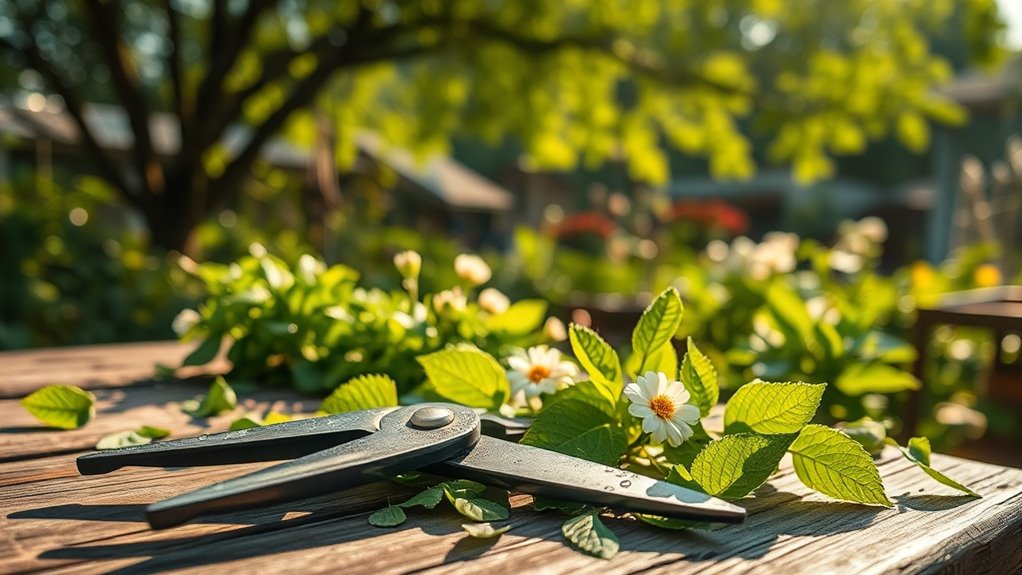My Best Pruning Tips After Years of Trial and Error
Pruning can be a daunting task, but it doesn’t have to be. With the right timing and technique, you’ll enhance your garden’s growth while minimizing stress on your plants. Knowing when to prune is crucial, and having the proper tools at your disposal makes all the difference. Let’s explore some tips that can transform your pruning approach, ensuring your garden thrives.
Understanding the Basics of Pruning
When you understand the basics of pruning, you can significantly improve the health and appearance of your plants.
Start by learning which branches to cut—focus on dead, diseased, or crossing branches. Use sharp, clean tools for precise cuts. Additionally, be mindful of common pruning mistakes that can hinder your plants’ growth and full potential.
Timing Your Pruning for Maximum Impact
To achieve the best results with your pruning efforts, timing is crucial.
Prune during the plant’s dormant season for most trees and shrubs, usually in late winter or early spring.
For flowering plants, wait until after they bloom.
Always consider your specific plant types, as their growth cycles vary.
Proper timing not only enhances health but also promotes vibrant growth and flowering. Additionally, employing essential pruning techniques can further improve the effectiveness of your efforts.
Essential Tools Every Pruner Should Have
Having the right tools can make all the difference in your pruning projects.
Essential tools include sharp bypass pruners for precise cuts, loppers for thicker branches, and a pruning saw for larger limbs.
Don’t forget sturdy gloves to protect your hands. A hand trowel and a sturdy bucket for debris are also handy.
Investing in quality tools ensures efficient, effective pruning. Properly selecting tools can significantly enhance your gardening experience and provide excellent value for your investment.
Techniques for Different Types of Plants
Proper pruning techniques vary significantly depending on the type of plant you’re working with.
Consider these approaches:
-
For shrubs, focus on shaping and removing dead stems.
-
For trees, prune during dormancy to prevent stress.
-
For flowering plants, remove spent blooms to encourage new growth.
-
For fruit-bearing plants, thin out branches to improve air circulation and sunlight exposure.
Additionally, optimal times for pruning can enhance overall garden health, ensuring your plants remain vibrant and productive.
Choose wisely, and your plants will thrive!
Common Mistakes to Avoid While Pruning
While pruning can significantly enhance your plants’ health and appearance, several common mistakes can undermine your efforts.
Avoid cutting too much at once, as it stresses the plant. Don’t use dull tools, which can lead to ragged cuts. Also, prune at the wrong time; seasonal timing is crucial. Lastly, neglecting to clean your tools can spread diseases. Additionally, be aware that proper pruning techniques are essential for promoting optimal growth.
Stay mindful to achieve optimal results.

